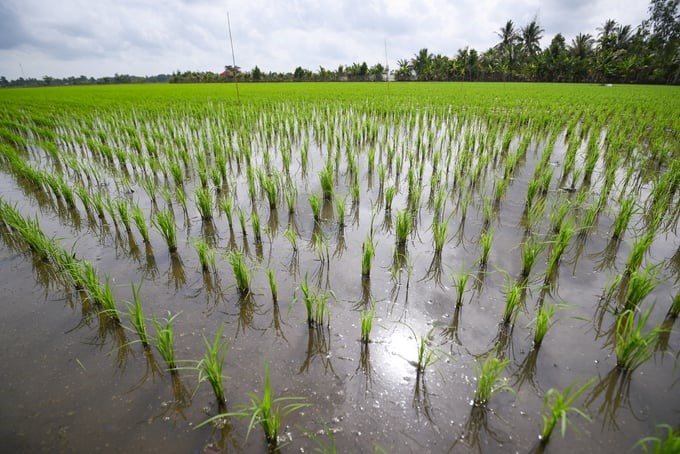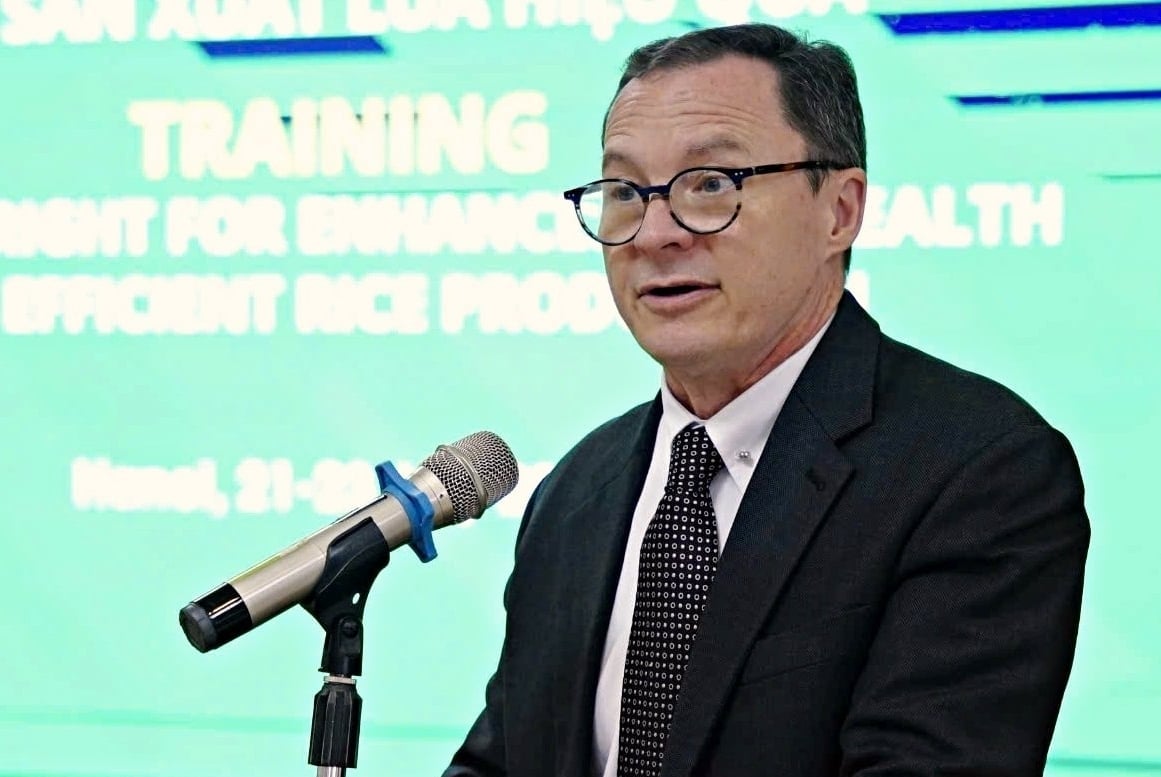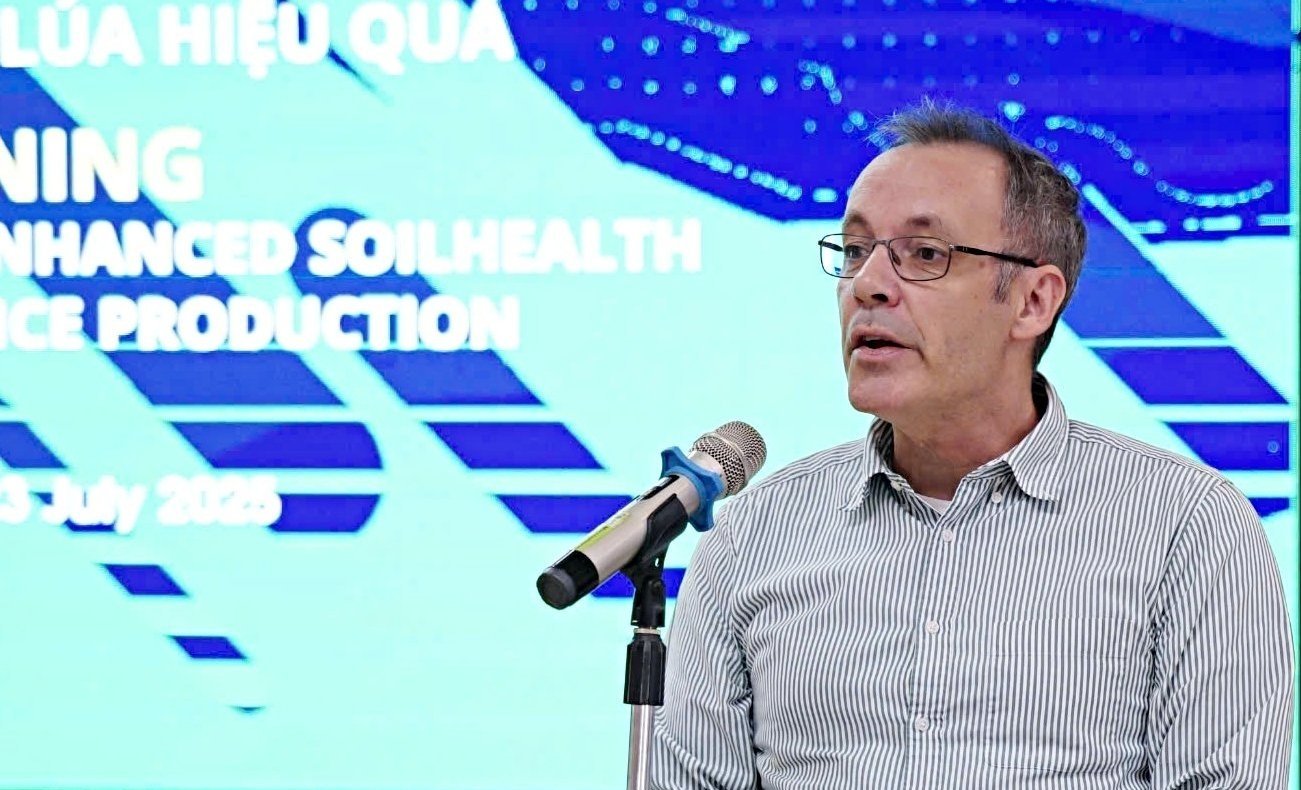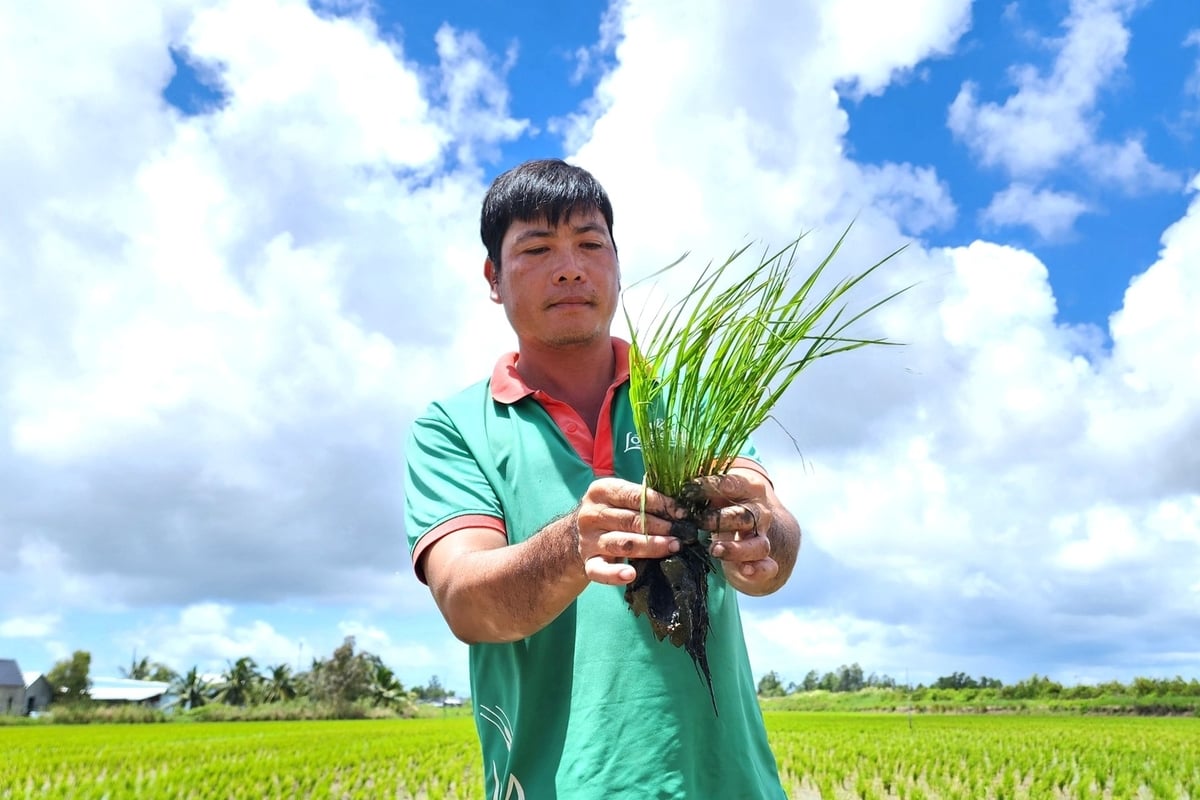December 6, 2025 | 11:16 GMT +7
December 6, 2025 | 11:16 GMT +7
Hotline: 0913.378.918
December 6, 2025 | 11:16 GMT +7
Hotline: 0913.378.918
As part of the Fertilize Right project, from July 21 to 23 in Hanoi, the International Rice Research Institute (IRRI), the United States Department of Agriculture (USDA), and the Plant Production and Protection Department (Ministry of Agriculture and Environment) are jointly organizing a special training program on "Right Fertilization for Improved Soil Health and Efficient Rice Production.”
The training program features participation from domestic and international experts, representatives from fertilizer companies, research institutes, and regulatory agencies, all working towards the common goal of reducing greenhouse gas emissions and improving soil health in rice production.

Fertilize Right initiative aims to increase rice productivity and reduce production costs, reduce soil pollution and greenhouse gas emissions. Photo: Le Hoang Vu.
According to Dr. Nguyen Van Hung – Senior Expert in Mechanization and Post-Harvest at IRRI – rice production in Vietnam is under increasing pressure from environmental challenges and rising production costs. Traditionally, rice farmers have used large amounts of seed (over 120 kg/ha) and applied excessive nitrogen fertilizer (more than 110 kg N/ha). Moreover, burning straw after harvest leads to a complete loss of nitrogen contained in the straw, while also causing environmental pollution and greenhouse gas emissions. As a result, producing 1 kg of rice can generate over 1 kg of CO2e emissions.
To tackle these challenges, the Fertilize Right initiative was launched. The project aims to produce high-quality, low-emission rice while cutting carbon emissions by at least 10%. It emphasizes optimized cultivation practices, the use of high-efficiency, low-emission fertilizers, and new technologies for processing rice by-products.
Applying fertilizers scientifically and balanced boosts rice yields and lowers production costs, as well as reduces soil contamination and greenhouse gas emissions.
Mr. Ralph Bean - USDA Agricultural Counselor in Vietnam, emphasized: “Fertilize Right focuses on improving the efficiency and effectiveness of fertilizer use, increasing farmers’ income from rice cultivation, and enhancing soil health and fertility. This approach aligns with the priorities of both the U.S. Government and Vietnam’s partners to foster responsible and sustainable agricultural growth.”
He praised fertilizer agribusinesses for driving innovation and translating research into effective, environmentally friendly products.

Ralph Bean, US Agricultural Counselor in Vietnam, addressed the training program. Photo: Linh Linh.
Dr. Robert Caudwell, Representative of the International Rice Research Institute Vietnam, added: “There is a growing demand from both farmers and the market for high-quality, efficient fertilizers for rice production. Research on fertilizers helps companies shape their production strategies in line with the latest developments and needs of the agricultural sector.”
He emphasized that the training program will deliver practical knowledge, covering topics such as nutrient management, soil mapping, fertilizer recommendations, and innovative fertilizer solutions.
The training program on Fertilize Right covers optimal nutrient management for rice, digital applications (Rice Crop Manager - RCM), mechanical direct seeding with fertilizer banding (mDSR), straw management, and organic fertilizer production from agricultural by-products. These methods have been proven to reduce seed usage (≤60 kg/ha), nitrogen application (70-80 kg N/ha), and emissions by 10-20% while maintaining high yields.
According to Dr. Tovohery Rakotoson, a soil expert from CGIAR, soil health is the capacity of soil to function as a living ecosystem, capable of sustaining plant productivity, improving water and air quality, and minimizing emissions. Healthy soil is characterized by good porosity, drainage, rich microbial life, sufficient nutrients, and no harmful chemical residues.
USDA's soil management principles include reducing tillage, planting cover crops, crop rotation, reusing by-products, and integrating appropriate livestock. These principles not only help maintain fertility but also increase organic matter content, reduce nutrient leaching, and decrease greenhouse gas emissions.

Mr. Robert Caudwell, IRRI Representative for Vietnam, said that the demand for high-quality and effective fertilizers is increasing. Photo: Linh Linh.
The training program also introduced the Rice Crop Manager (RCM) Vietnam application – a nutrient management tool for rice currently being developed and improved in Vietnam, with trials planned for 2024 in three Mekong Delta provinces and three Red River Delta provinces.
RCM operates based on data from soil maps, fertilizers, and cultivation practices, combined with results from field soil sample analyses and survey information from over 10,000 farmer households. This application helps farmers accurately calculate the necessary amount of fertilizer, avoiding wasteful over-application or yield-affecting under-application.
According to Mr. Nguyen Van Hung, survey data shows that fertilizer costs currently account for up to 30% of the total rice cultivation costs, particularly in the Mekong Delta. If RCM recommendations are well-applied, farmers can reduce input costs and increase nutrient use efficiency, thereby improving yield and profit per unit area, while contributing to reducing greenhouse gas emissions.

IRRI's Rice Crop Manager (RCM) Vietnam application helps farmers accurately calculate the amount of fertilizer needed, avoiding over-fertilization which causes waste or under-fertilization which affects rice yield. Photo: Le Hoang Vu.
IRRI is also implementing the mechanization of straw collection combined with biochemical technology to produce organic fertilizer to replace traditional straw burning, a major source of emissions and severe nutrient loss for the soil.
Associate Professor Dr. Nguyen Van Bo, former Director of the Vietnam Academy of Agricultural Sciences, assessed: "The Fertilize Right project opens up opportunities to promote an efficient, high-quality, and low-emission rice production system, contributing to protecting human health through protecting soil health.”
Translated by Linh Linh

(VAN) After three years, Project FST/2020/123 collected approximately 3,000 insect specimens, classified them into about 50 morphological groups, and identified around 40 species, including several new species.
/2025/12/01/0509-2-175427_206.jpg)
(VAN) Emission-reducing coffee areas in Lam Dong have entered the new crop with stable yields, improved quality, and a remarkably enhanced cultivation environment.

(VAN) The Institute of Agricultural Sciences for Southern Vietnam (IAS) marked its 100th anniversary in Ho Chi Minh City, celebrating a century of growth as a leading institute contributing significantly to Viet Nam’s agricultural development.

(VAN) An increasing number of livestock farms are using biogas generators to create a source of renewable electricity, helping to save costs and mitigate environmental pollution.

(VAN) Small changes in rice cultivation, from irrigation methods and straw collection to input management, are paving a new way for Vietnam's agriculture in the journey toward emission reduction.

(VAN) With the project of converting biogas into renewable electricity, Australia is both helping pig farms reduce their energy costs by up to 25% and contributing to environmental protection.
![Hue aims for Net Zero: [1] Initial steps from green transportation](https://t.ex-cdn.com/nongnghiepmoitruong.vn/608w/files/huytd/2025/11/28/0853-anh-6-giao-thong-xanh-hue-094717_940-153724.jpg)
(VAN) For sustainable development, Hue City is implementing many solutions to promote green transportation, which is an important initial step on the journey to building a Net Zero Hue.